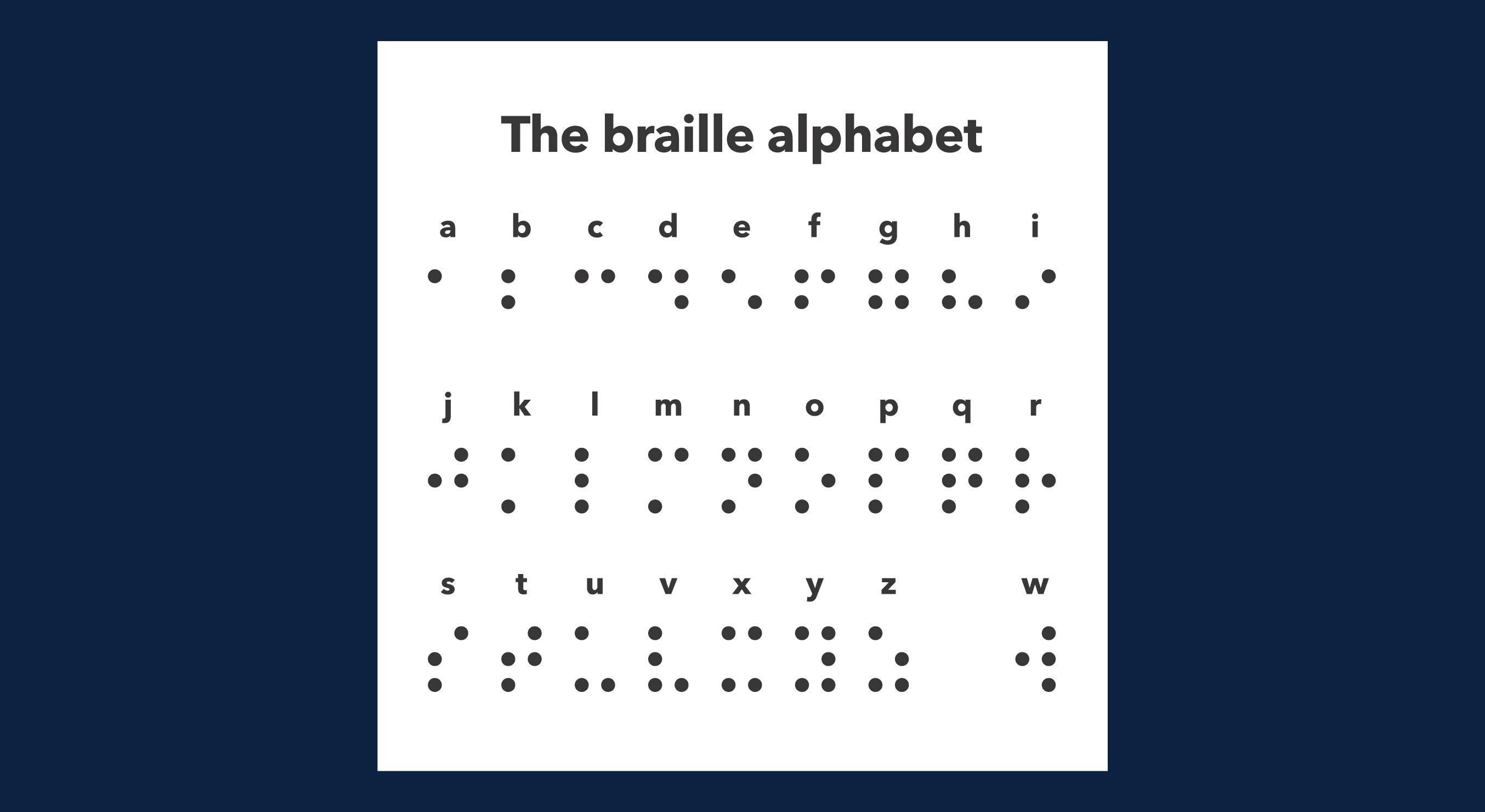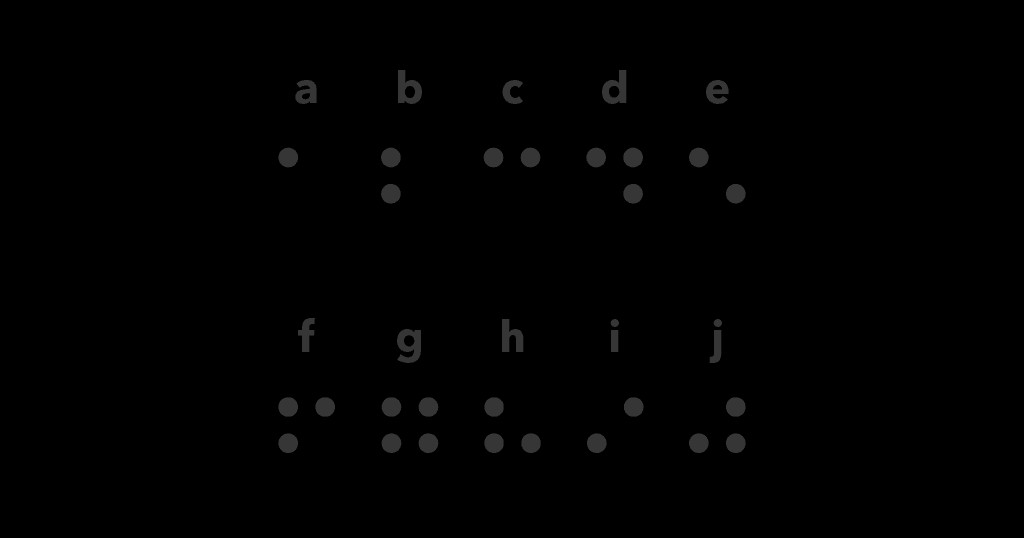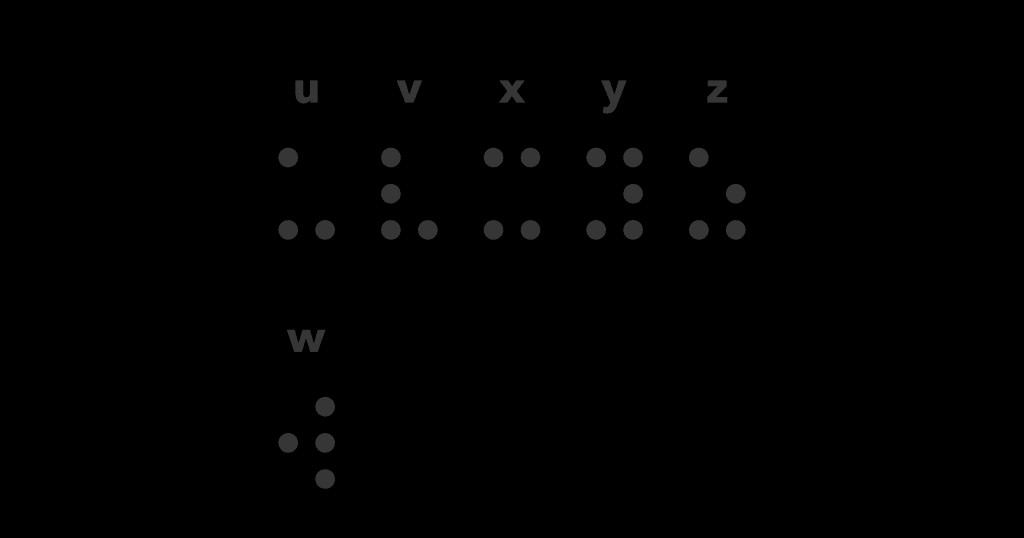Braille is a tactile writing system used by people who are blind or visually impaired. It’s not a language, but a code that allows for reading and writing through touch. Learning braille opens up a world of literacy, independence, and opportunity. Whether you are visually impaired, know someone who is, or simply interested in learning a new skill, understanding How To Learn Braille is the first step towards accessing this unique and vital system.
This guide will take you through the fundamentals of braille, starting with the braille alphabet and progressing to practical steps you can take to begin your braille learning journey.
Understanding the Basics of Braille
Before diving into the alphabet, it’s crucial to understand the core concept of braille. Braille is based on a cell made up of six dots arranged in two columns and three rows. Each dot position is numbered, which allows for 64 possible combinations, including spaces and punctuation. These combinations represent letters, numbers, punctuation marks, and even contractions in more advanced forms of braille.
The Braille Cell Explained
Imagine a braille cell as a tiny rectangle with six dots.
- Top Left: Dot 1
- Middle Left: Dot 2
- Bottom Left: Dot 3
- Top Right: Dot 4
- Middle Right: Dot 5
- Bottom Right: Dot 6
Each letter and symbol in braille is formed by raising a specific combination of these dots. Understanding this cell structure is fundamental to learning and recognizing braille characters.
Grade 1 Braille: The Alphabet
The most basic form of braille is Grade 1 Braille, also known as the braille alphabet. In Grade 1 braille, each letter of the alphabet, as well as punctuation marks and numbers, has its own distinct braille symbol. This is where most beginners start their braille learning journey. Let’s explore the braille alphabet in sets to make it easier to learn.
Braille Letters A – J
The first ten letters of the alphabet (a-j) use dots in the upper and middle rows of the braille cell (dots 1, 2, 4, and 5). Learning these initial letters provides a strong foundation for the rest of the alphabet.
| Letter | Dot Configuration |
|---|---|
| a | 1 |
| b | 1, 2 |
| c | 1, 4 |
| d | 1, 4, 5 |
| e | 1, 5 |
| f | 1, 2, 4 |
| g | 1, 2, 4, 5 |
| h | 1, 2, 5 |
| i | 2, 4 |
| j | 2, 4, 5 |



Braille Letters K – T
The next set of letters (k-t) builds upon the first ten. They are formed by adding dot 3 to each of the braille letters from a-j. This pattern makes learning the second set significantly easier once you’ve mastered the first.
| Letter | Dot Configuration |
|---|---|
| k | 1, 3 |
| l | 1, 2, 3 |
| m | 1, 3, 4 |
| n | 1, 3, 4, 5 |
| o | 1, 3, 5 |
| p | 1, 2, 3, 4 |
| q | 1, 2, 3, 4, 5 |
| r | 1, 2, 3, 5 |
| s | 2, 3, 4 |
| t | 2, 3, 4, 5 |
Braille Letters U – Z and W
The final letters (u-z) continue the pattern. For letters u-z, dot 6 is added to the braille letters from a-e. However, the letter ‘w’ is an exception because it wasn’t in the original French alphabet when Louis Braille invented the system. The letter ‘w’ uses dots 2, 4, 5, 6.
| Letter | Dot Configuration |
|---|---|
| u | 1, 3, 6 |
| v | 1, 2, 3, 6 |
| x | 1, 3, 4, 6 |
| y | 1, 3, 4, 5, 6 |
| z | 1, 3, 5, 6 |
| w | 2, 4, 5, 6 |
Capitalization and Numbers
To indicate a capital letter in braille, a dot 6 is placed before the letter. For example, Capital ‘A’ would be dot 6 followed by dot 1. Braille numbers are represented by the first ten letters of the alphabet (a-j) preceded by a number sign (dots 3, 4, 5, 6). So, ‘1’ is represented by the number sign followed by ‘a’, ‘2’ by the number sign followed by ‘b’, and so on.
Steps to Start Learning Braille
Learning braille requires dedication and practice, but it is achievable for anyone. Here’s a step-by-step guide to get you started:
- Familiarize Yourself with the Braille Alphabet: Start by studying the braille alphabet charts and tables provided above. Focus on memorizing the dot configurations for each letter.
- Practice Reading Braille by Sight (if sighted): If you are sighted, begin by visually identifying braille letters. Use online resources, flashcards, or braille alphabet books to practice recognizing the shapes of braille letters.
- Develop Tactile Sensitivity: For both sighted and visually impaired learners, tactile sensitivity is key. Practice distinguishing textures with your fingertips. You can try exercises like sorting different fabrics or grains by touch.
- Use Braille Learning Tools:
- Braille Alphabet Cards: These cards show the braille letter and the corresponding printed letter.
- Braille Books for Beginners: Start with simple braille books designed for learners.
- Online Braille Translators and Resources: Many websites and apps offer braille translators, quizzes, and interactive lessons.
- Perkins Brailler or Slate and Stylus: These are tools used to write braille. Learning to write braille reinforces your understanding of the dot configurations.
- Start with Short Words and Phrases: Once you are comfortable with individual letters, begin practicing with simple words and phrases. Start with your name, common words like “cat,” “dog,” “hello,” and gradually increase complexity.
- Read Braille Regularly: Consistent practice is essential. Try to read braille every day, even if it’s just for a few minutes. The more you practice, the faster you will progress.
- Join a Braille Learning Community: Connecting with other braille learners or joining a braille class can provide support, motivation, and valuable learning opportunities. Look for local organizations for the blind or online braille learning groups.
- Be Patient and Persistent: Learning braille takes time and effort. Don’t get discouraged by initial challenges. Celebrate small victories and keep practicing.
The Benefits of Learning Braille
Learning braille is not only beneficial for individuals who are blind or visually impaired but also offers advantages for sighted people:
- Literacy and Independence for the Visually Impaired: Braille is crucial for literacy and independent learning, allowing access to a wide range of written materials.
- Enhanced Tactile Skills: Learning braille improves tactile sensitivity and fine motor skills.
- Cognitive Benefits: Learning a new code like braille can enhance cognitive skills, memory, and pattern recognition.
- Understanding and Empathy: For sighted individuals, learning braille fosters a greater understanding of the challenges and abilities of visually impaired people, promoting inclusivity and empathy.
- Career Opportunities: Braille literacy skills can open up career opportunities in fields like education, accessibility services, and technology.
Braille Beyond the Alphabet
Once you’ve mastered the braille alphabet, you can explore other aspects of braille, such as:
- Grade 2 Braille (Contracted Braille): This more advanced form of braille uses contractions to represent common words or parts of words, making reading and writing faster.
- Braille Numbers and Punctuation: Learning the symbols for numbers, punctuation marks, and other symbols is essential for comprehensive braille literacy.
- Unified English Braille (UEB): UEB is a braille code that unifies literary braille and other braille codes (like mathematics and computer braille) into a single system.
- Braille in Different Languages: Many languages have their own braille codes adapted from the original braille system.
Advocate for Braille Literacy
Braille is a vital tool for literacy and inclusion for blind and visually impaired individuals. By learning about braille and advocating for its use, you can contribute to a more accessible and equitable world. Share this article, support organizations promoting braille literacy, and encourage the inclusion of braille in public spaces, books, and technology.
Learning “how to learn braille” is just the beginning. Embrace the journey, celebrate your progress, and unlock the power of braille!
Share this article to raise awareness about braille!
